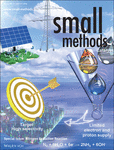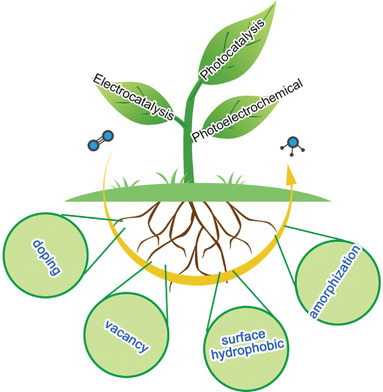Journal list menu
Export Citations
Download PDFs
Cover Picture
Nitrogen Reduction Reactions: Advances in Electrocatalytic N2 Reduction—Strategies to Tackle the Selectivity Challenge (Small Methods 6/2019)
- First Published: 17 June 2019
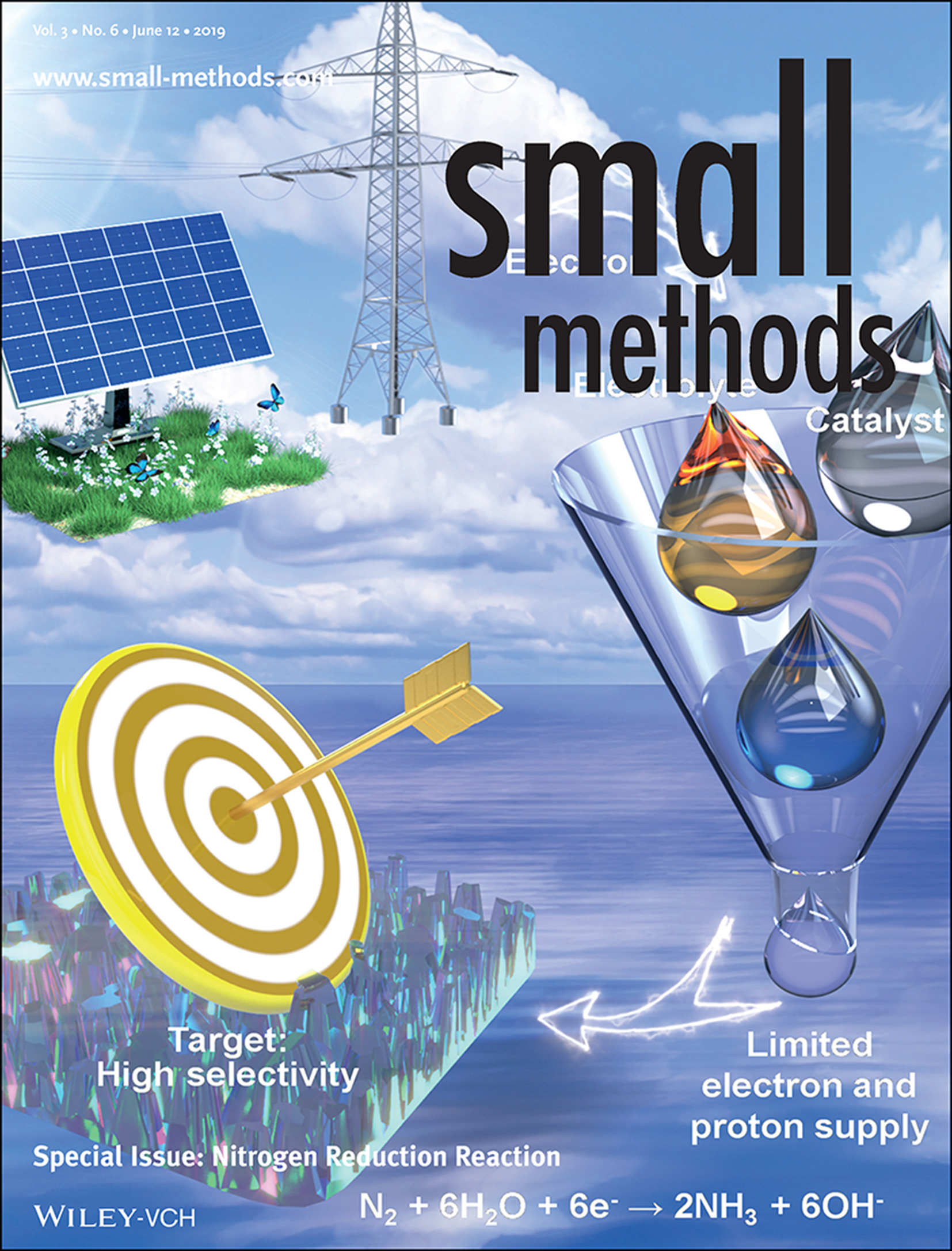
In article number 1800337, Liang-Xin Ding, Haihui Wang, and co-workers review current strategies to address the selectivity challenges for electrochemical nitrogen reduction reaction (NRR). The proposed strategies are systematically summarized from the perspective of catalyst design, cell configuration, electrolyte choice etc. Moreover, as a new field, a standard pattern for executing control experiments is recommended. This review gives further insights about NRR studies.
Masthead
Editorial
Reviews
Advances in Electrocatalytic N2 Reduction—Strategies to Tackle the Selectivity Challenge
- First Published: 26 October 2018

This review summarizes current strategies for tackling the selectivity challenge of electrocatalytic nitrogen reduction reaction (NRR). The proposed strategies from the perspectives of catalyst design, cell configuration, electrolyte choice, etc., are systematically researched. To ensure experimental rigor, a standard pattern for executing control experiments is recommended. This review is expected to motivate the NRR field toward greater advancement.
Defect Engineering Strategies for Nitrogen Reduction Reactions under Ambient Conditions
- First Published: 24 October 2018
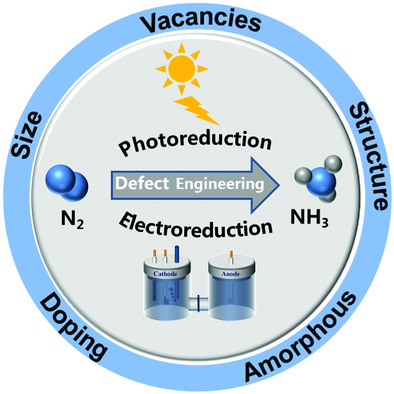
This review focuses on the defect engineering strategies to design highly efficient electrochemical or photocatalytic nitrogen reduction reaction (NRR) nanocatalysts. The defect sites would serve as the active sites for NRR and further enhance its intrinsic performance. The defect engineering strategies are summarized in different categories, including vacancies, doping, amorphous phases, size effect, and structure effect.
Photocatalysis and Photoelectrocatalysis Methods of Nitrogen Reduction for Sustainable Ammonia Synthesis
- First Published: 12 November 2018
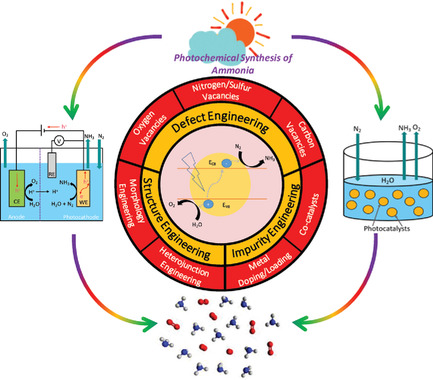
Photochemical synthesis via nitrogen reduction reaction has gained increased attention as a sustainable method for the production of ammonia. This review discusses the basic understanding of photoreduction of nitrogen and highlights the development of photocatalysts and photoelectrocatalysts for ammonia synthesis. The methods for ammonia detection are also introduced.
Recent Progress on Electrocatalyst and Photocatalyst Design for Nitrogen Reduction
- First Published: 19 November 2018
Communications
S-Doped Carbon Nanospheres: An Efficient Electrocatalyst toward Artificial N2 Fixation to NH3
- First Published: 07 December 2018
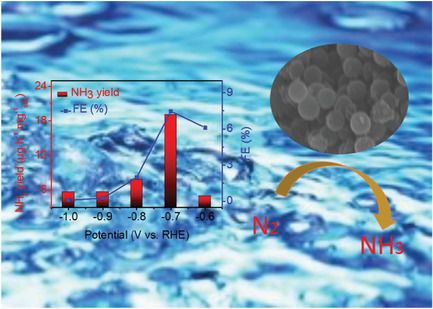
S-doped carbon nanospheres (S-CNSs) are an efficient catalyst for electrochemical N2 fixation to NH3. In 0.1 m Na2SO4, the S-CNS attains a large NH3 yield of 19.07 µg h−1 mg−1cat. and a high Faradic efficiency of 7.47% at –0.7 V vs RHE. Notably, this catalyst demonstrates high electrochemical and structure stabilty.
Chromium Oxynitride Electrocatalysts for Electrochemical Synthesis of Ammonia Under Ambient Conditions
- First Published: 21 October 2018
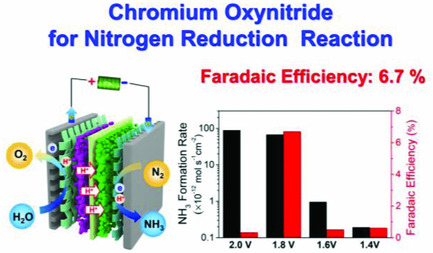
Partially oxidized chromium nitride (chromium oxynitride) nanoparticles are synthesized and their nitrogen reduction reaction activities are evaluated in a proton exchange membrane electrolyzer under ambient conditions. The highest ammonia formation rate of 8.9 × 10−11 mol s−1 cm−2 and Faradaic efficiency of 6.7% are achieved at 2.0 and 1.8 V, respectively.
Tailoring Oxygen Vacancies of BiVO4 toward Highly Efficient Noble-Metal-Free Electrocatalyst for Artificial N2 Fixation under Ambient Conditions
- First Published: 15 November 2018
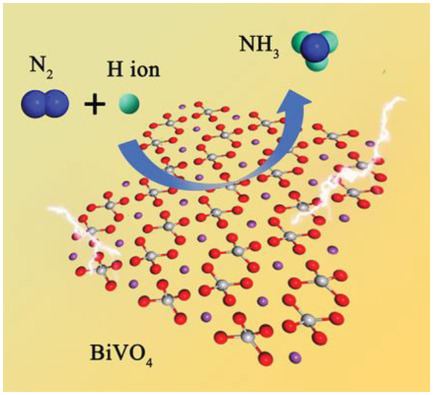
Non-noble metal semiconductor BiVO4 along with different oxygen vacancies (OVs) concentrations is obtained by a facile hydrothermal synthesis. Based on the theoretical calculations, the optimum BiVO4 (pH = 7) sample presents brilliant N2 reduction reaction electrocatalytic performance under ambient conditions owing to the enhanced N2 adsorption energy and more favorable active reaction site at the V atom due to the introduction of OVs.
Promoting Nitrogen Electroreduction on Mo2C Nanoparticles Highly Dispersed on N-Doped Carbon Nanosheets toward Rechargeable Li–N2 Batteries
- First Published: 21 November 2018

Among various N2 electroreduction methods, combining N2 reduction with batteries is simple and efficient. Here, a composite of ultrasmall Mo2C particles dispersed on N-doped carbon nanosheets acts as the air cathode for Li–N2 batteries. With high discharge capacity and superior reversibility, the Li–N2 battery is a promising platform for N2 electroreduction and electrochemical energy storage.
NbO2 Electrocatalyst Toward 32% Faradaic Efficiency for N2 Fixation
- First Published: 23 November 2018
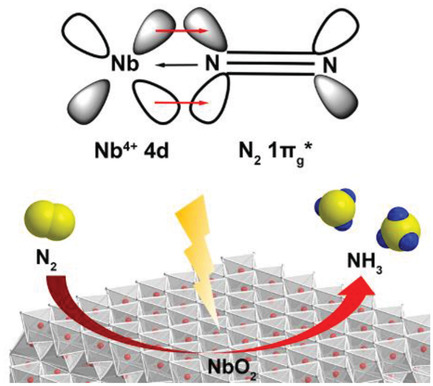
NbO2 nanoparticles are successfully prepared and demonstrated as an efficient electrocatalyst for N2 fixation, with a peak faradaic efficiency of 32% at −0.60 V versus reversible hydrogen electrode. Compared to the Nb5+ counterpart, Nb4+ not only provides empty d-orbitals but also d-electrons to enable π back donation, and thus exhibits better electrocatalytic N2 reduction activity.
Full Papers
Single or Double: Which Is the Altar of Atomic Catalysts for Nitrogen Reduction Reaction?
- First Published: 04 October 2018
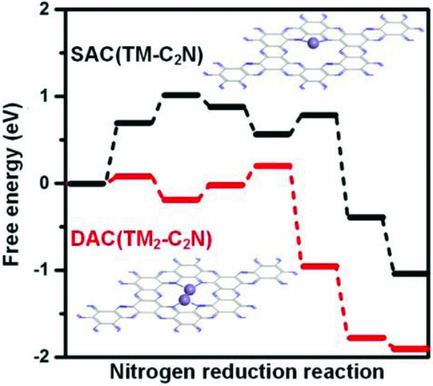
Double atomic catalysts will become the altar of atomic catalysts for nitrogen reduction reaction instead of single atomic catalysts. Moreover, the Mn2-C2N has the highest catalytic activity with the potential of −0.23 V versus reversible hydrogen electrode, indicating the promising catalyst for practical applications.
Modeling of Electrocatalytic Dinitrogen Reduction on Microstructured Electrodes
- First Published: 24 October 2018
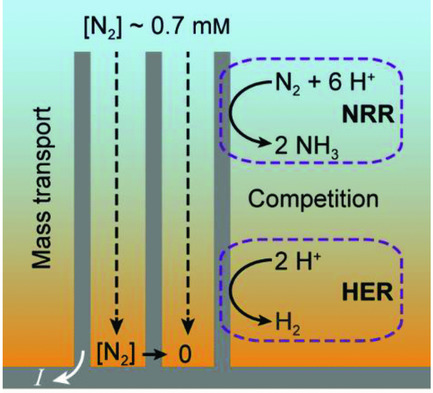
One major challenge for electrochemical nitrogen reduction is the competition from hydrogen evolution. Herein, is reported the development of a microkinetic model that includes both competing reactions and mass transport. The simulation results suggest the possibility that proton transfer becomes rate-limiting in nitrogen reduction and microstructured electrodes may pose a negative effect on selectivity due to poor mass transport.
N2 Reduction on Fe-Based Complexes with Different Supporting Main-Group Elements: Critical Roles of Anchor and Peripheral Ligands
- First Published: 17 October 2018
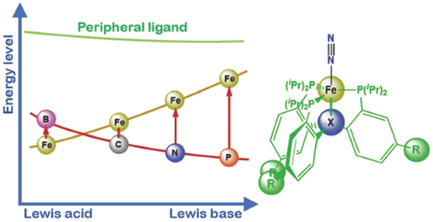
Critical roles of anchoring and peripheral ligand in N2 reduction are investigated theoretically based on the trigonal bipyramidal (XPiPr 3)Fe (X = B, C, N) scaffold. Increasing the electron-donating ability of anchor atom (X) facilitates N2 activation and protonation. Tuning the redox ligands is proposed as a promising direction toward better catalysts for N2 fixation.
Computational Screening of Efficient Single-Atom Catalysts Based on Graphitic Carbon Nitride (g-C3N4) for Nitrogen Electroreduction
- First Published: 13 December 2018
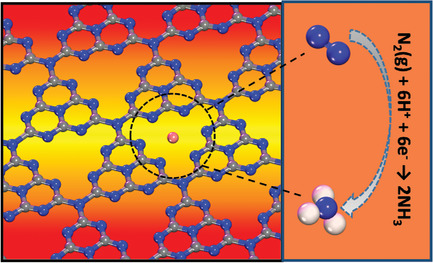
Searching for highly efficient and stable electrocatalysts for N2 fixation is critical to NH3 synthesis. Here, it is proposed that a single tungsten atom anchored on g-C3N4 exhibits superior catalytic performance for N2 reduction to NH3 due to its low limiting potential, significant suppressing effect for HER, and good stability.




